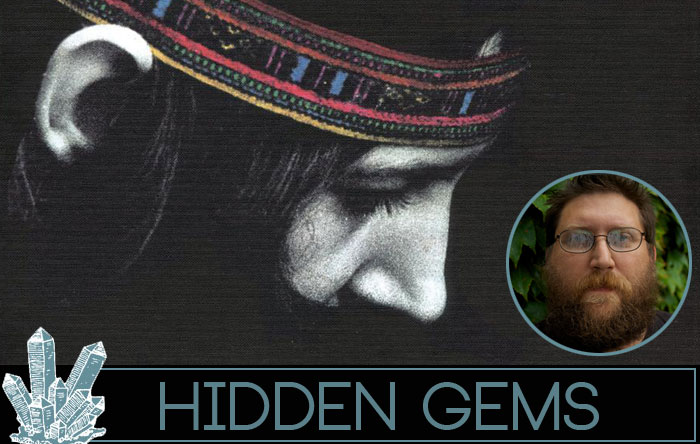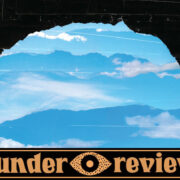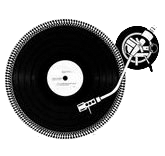Elkhorn’s Jesse Sheppard on Bruce Palmer’s – The Cycle Is Complete 

One of my top picks from last year was, without hesitation, the double LP darkness and light journey of Elkhorn. The double dose of lysergically locked guitars on Elk Jam and Sun Cycle pushed the band beyond anything in their catalog and sets up some pretty high expectations for their upcoming shut-in brainstorm The Storm Sessions. I’ve gotten to run a few shows over the past year with the band’s Jesse Sheppard on the bill and know that he’s not only a consummate musican but also a devoted collector. Naturally I figured he’d be a great fit for the Hidden Gems series and, as such, he has shed some much-needed light on a Buffalo Springfield-adjacent obscurity that sent a bit of a middle finger to the record industry on its release. Check out Jesse discussing Bruce Palmer’s The Cycle is Complete below.
“Of course, the first thing I asked myself when I heard I needed to pick a Hidden Gem was “What’s a hidden gem?” Muses Jesse. “Elkhorn’s next release, The Storm Sessions (coming out on Beyond Beyond is Beyond, February 7th), is an extended studio improvisation, so space jams have been on my mind of late, and something along those lines seemed like an appropriate choice. “Gem” was a word I could get my head around. There are plenty of awesome and unique albums, but the real gems transcend and change how you think about music. “Hidden” was more of a stretch. Hidden to whom? There isn’t too much in my collection that is unknown to the record hoarding seventies obsessives in my circle of friends. But it occurred to me that while everyone is certainly keyed into Buffalo Springfield, undeniably one of the seminal bands in the evolution of Cosmic Americana; The Cycle Is Complete, bassist Bruce Palmer’s first and only solo album might not be on your radar.“
“It certainly wasn’t on mine,” Sheppard continues, “when Nathan Bowles first played it for me at his place in Blacksburg during the Fall of 2014. Nathan had been turned on to it a few years earlier by Jason Meagher, and it was sitting out in his Now Playing pile when I was over. Always being on the search for the ultimate jam (it’s the journey not the destination) the music piqued my interest from the minute I heard it and I had to run down a copy when I got home.”

“Palmer is without a doubt one of the most enigmatic personalities to burn out in the Summer of Love, having drifted down from Toronto to Los Angeles with Neil Young in ’66. The pair stumbled onto Steven Stills and Richie Furay on Sunset Boulevard and music was never the same again. But Palmer’s erratic behavior, including what his brief Wikipedia entry describes as a “predilection to sit at home reading mystical texts,” led to the band replacing him with a series of stringers. As the sixties came to a close, Palmer had been hit by multiple pot busts and was facing deportation. He returned to Canada and left the music industry behind, except for an appearance on Young’s 1982 disco-grunge album Trans and a brief Buffalo reunion in the eighties. But before he split the scene, MGM approached him about going into RCA’s Hollywood studios with producer Don Hall and engineer Dave Hassinger to record a solo album.“ “According to Palmer, he tricked the label into giving him the contract by providing a polished demo of material he had no intent of recording. In fact,” Jesse muses, “he had never written a song or even sung on tape before the session, and he had no plans to start. What resulted was one of the epic paeans to the dark, fried edges of Flower Power culture… an album that certainly holds its own aside fractured masterpieces like Oar, End of the Game, and The Madcap Laughs.“
“As an ardent fan of bold and ambitious, if sometimes inconsistent, artistic statements (Apocalypse Now is my favorite movie, notes Sheppard), The Cycle Is Complete does not disappoint. The four tracks on the record wend from acoustic space to white soul and everywhere in between. A Middle Eastern influence is clearly discernible, as you might expect if you were familiar with the work of the LA psych rockers, Kaleidoscope, who were brought in by Hall as Palmer’s backing band (apparently they had been working in the same studio on the Zabriskie Point soundtrack). Basic tracks were improvised spontaneously by Palmer (on guitar and bass), Jeff Kaplan (pianist and “musicologist” for the session), and Paul Lagos (who will always sit atop my drummer Olympus due to his work with Harvey Mandel and Sugarcane Harris in Pure Food and Drug Act). Then each of the other session players would lay their track down over the proceedings – violin (Chester Crill recording under the pseudonym Templeton Parcely), organ (Ed Roth), flute and oboe (Richard Aplan), and congas (performed by Latin Jazz percussionist Big Black, who would also go on to work with Mandel) weave together to create a dense but relaxed tapestry.”
Original LP Version
“But,” Jesse posits, “it’s the unexpected vocals from the one and only Rick James that place the cherry firmly on top. James (or Rick Matthews as he records here) had fronted Palmer and Young’s R&B band The Mynah Birds back in ‘65 while he was in Canada on the run from the US Navy. I had always assumed he was using a pseudonym to record the Cycle sessions, but it’s the other way around. This was a decade before super freakdom and the creation of the Rick James persona. He croons, scats, and curses with an incoherent sincerity, like Sly Stone crossed with Damo Suzuki.”
“Once the dust had settled, Palmer was dealing with over two hours of pure unadulterated exploration, so he took on the task of editing it all down to four “songs” of varying lengths and moods. The tunes are dense but mellow, with passages shifting focus from one instrument to another. Hand percussion and acoustic guitar, along with Palmer’s deft, round bass lines keep everything grounded. Imagine listening to The Incredible String Band or Lula Cortes through Vaseline. Thinking about it now, it occurs to me that there are some striking similarities between the Cycle jams and The Storm Sessions.,” Jesse notes. “Palmer has seamlessly melded folk and psych with jazz; and while the music always remains perfectly relaxed, a ribbon of tension runs through to create forward momentum. It’s music for a laid-back apocalypse. Today the effect is not unlike the feeling we’ve all experienced of a beautiful, warm day in the middle of January.
“In spite of its veneer of insanity, Palmer is making a clear point about the creation and function of music. “For What It’s Worth” it wasn’t, and Palmer intended it that way. “I handed it to them and they dropped their drawers. I gave them what I thought music was all about, not what they thought music was all about. That was what I intended to do. They released it and I retired. I had a laugh at the industry’s expense.” And release it they did, on September 4th 1970, with a striking gatefold cover no less. Palmer appears decked out in an embroidered hippie headband, shown sitting on the floor deep in the music; but he’s shrouded on all sides by darkness or refracted as if in a funhouse mirror. I can’t think of a more complete artistic expression of what it must have felt like to reach the frayed end of the sixties. But just as soon as the album appeared, it vanished due to poor sales. No one got Palmer’s joke or the deeper musical statement underlying it, including Lester Bangs who described the album in Rolling Stone as “long, long jams in a kind of limp noodle middling Eastern-Space vein.””
2003 CD Reissue Version
“Pinning this material down is not easy, but the task is made even more difficult by the fact that the 2003 CD release is notably different from the LP. As The Seth Man explains on Julian Cope’s Head Heritage blog, “Although ‘Oxo’ from the original album is present in its entirety on the CD, it’s as the final 7 minutes of ‘Alpha-Omega-Apocalypse’ while conversely: ‘Alpha-Omega-Apocalypse’ (from approximately 4:20-9:00) is used as the first 4:40 minutes of the CD version of ‘Oxo.’” In addition to this swap between “Alpha-Omega-Apocalypse” and “Oxo” (the titles of these two jammers being obvious references to the comix of Rick Griffin, who famously penned the cover of Aoxomoxoa), there’s about 10 minutes of music on the CD that’s not on the LP and vice versa.”
“These odd and inexplicable edits, the fascinating cast of characters, the forward-looking approach to genre and space… all these aspects of The Cycle Is Complete would seem to make it a perfect candidate for a reissue, but another thing I think makes Cycle a Hidden Gem is that while original copies aren’t that easy to come by, they aren’t exorbitantly expensive either. I found my ragged copy in the Jupiter Records bins for a ten spot in one of the truly memorable “eureka” moments of my record digging career (and this was after I’d owned the CD for a spell).“
“Bruce Palmer’s cycle came to completion in 2004 in Ontario at the age of 58, recognized for his achievements but perhaps not fully so. I wouldn’t find his remarkable solo work for another decade, but once I did its ability to combine elements of drug-addled freedom with organized intention has continued to inspire me. That’s why I consider it a true Hidden Gem.”
I would wholeheartedly agree with Jesse in this analysis of Palmer’s work. This is actually one of those delightful moments when this column leads me to finding a new favorite. I was unfamiliar with it before but fell hard when he brought it up. The record is an excellent curio for Byrds fans, but also a great document of the crash of the ‘60s into the early ‘70s. It’s a record for heads, but also a musician celebrating what truly drives them to create, and with a masterful rundown of studio talent in tow! Now, Jesse mentions that this would be ripe for a reissue, and it does seem that there was a version from 2010 that is still fairly available on LP. However, trouble is I can’t determine if its made from those CD mixes or the originals. I know there’s some talk of how the original mix might have been lost and that’s what lead to the CD, so maybe dig deeper on that if you’re going for the reissue. Otherwise, good luck in the bins. This one is a deep, deep Gem that keeps on giving. Check out The Storm Sessions as well, landing next month.
Support the artist. Buy it HERE.









